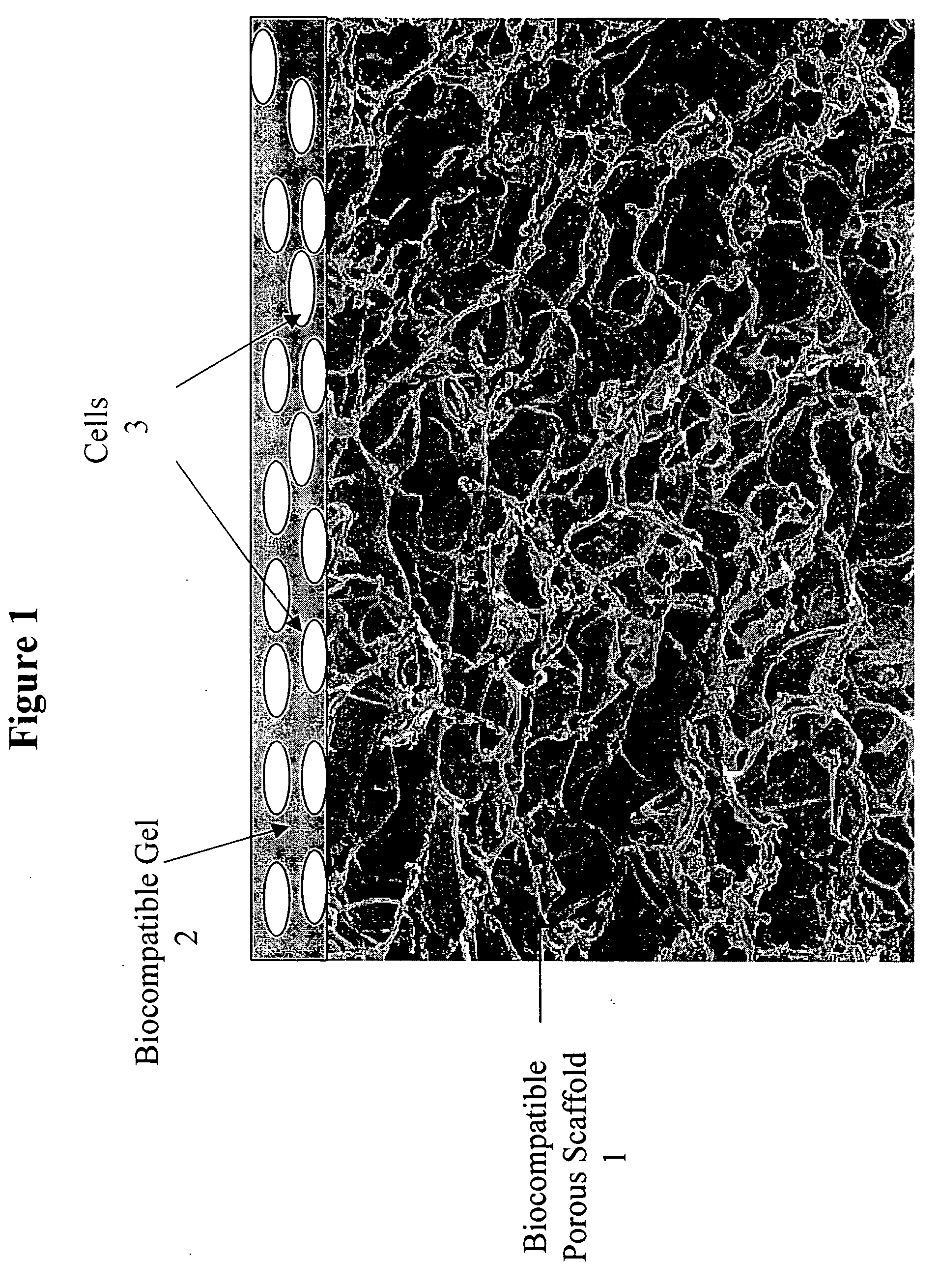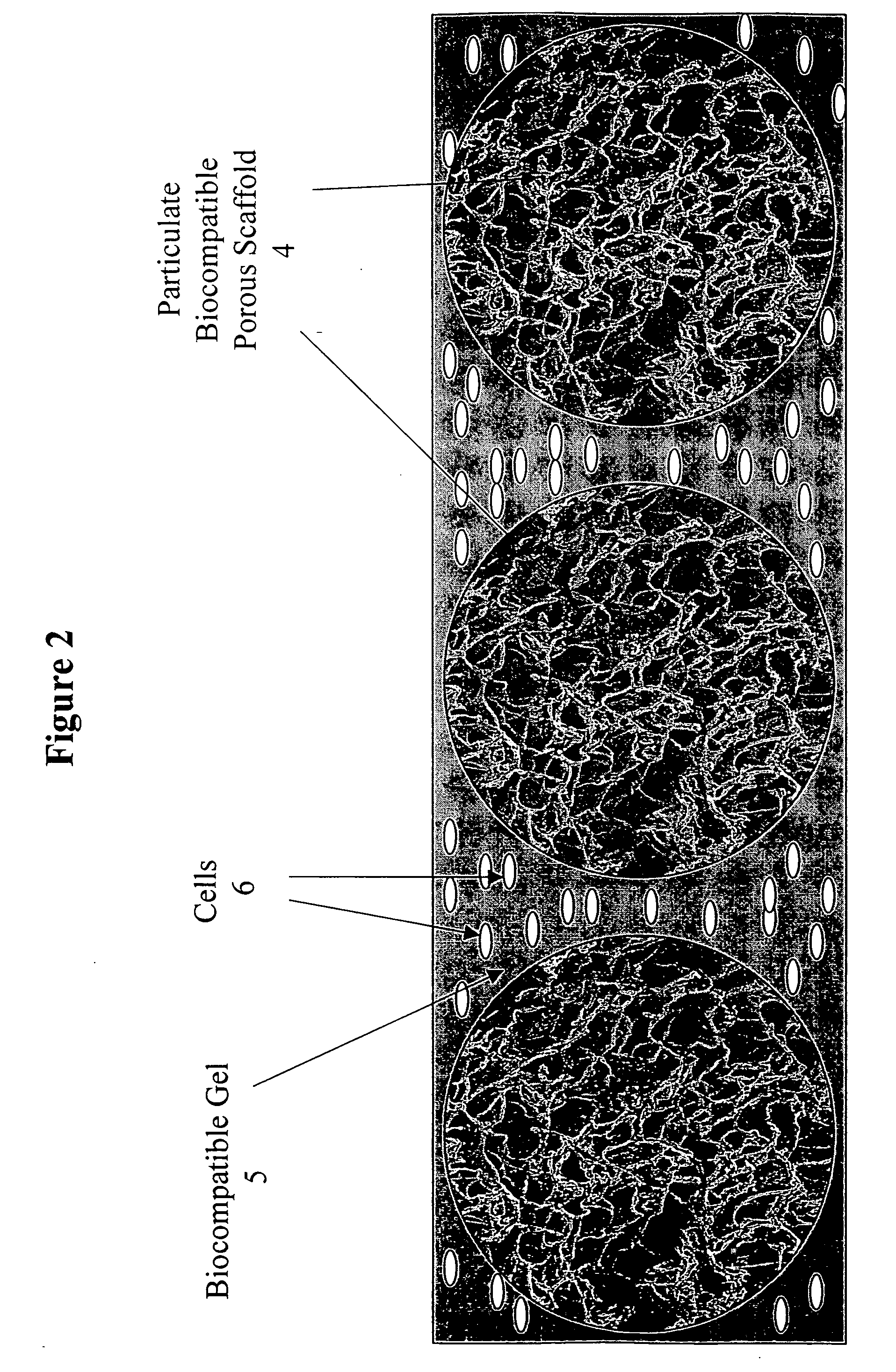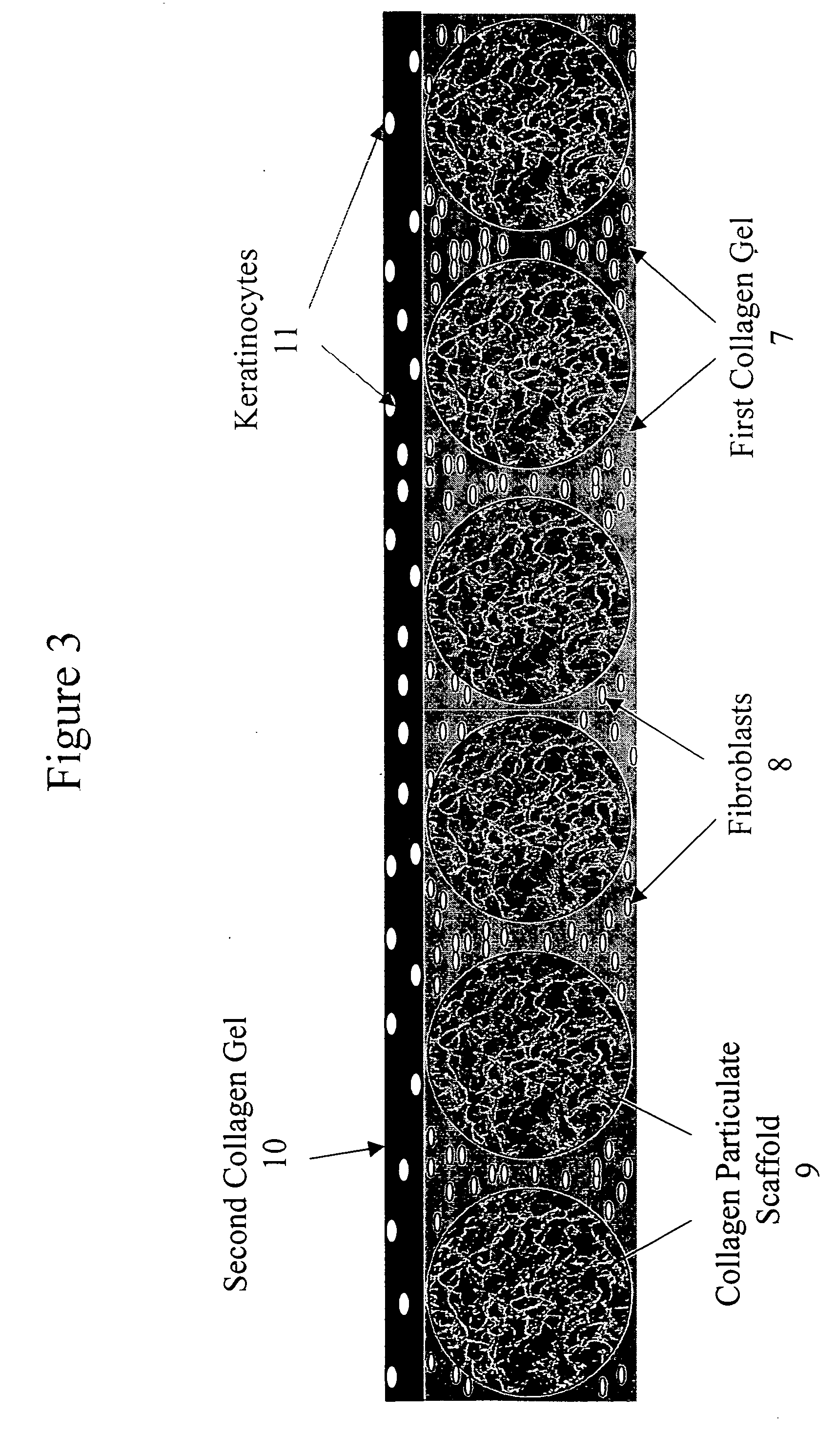Tissue composites and uses thereof
- Summary
- Abstract
- Description
- Claims
- Application Information
AI Technical Summary
Benefits of technology
Problems solved by technology
Method used
Image
Examples
example 1
I. Preparation of Porous Collagen Scaffold
[0145] (a) Preparation of Collagen Suspension
[0146] (i) Alternative A
[0147] A suspension of insoluble bovine collagen (5 mg / mL) in 5.0% of glacial acetic acid was submitted to homogenization in a Silverson, lab scale, rotor / stator homogenizer for 1 minute at 4,000 rpm, followed by a 1 minute cooling interval at room temperature prior to each of 12 subsequent 1 minute bursts. The bovine collagen was subsequently incubated at 4° C. overnight.
[0148] (ii) Alternative B
[0149] A suspension of insoluble bovine collagen (5 mg / mL) in 5.0% of glacial acetic acid was submitted to homogenization in a Silverson, lab scale, rotor / stator homogenizer for 30 minutes at 6,000 rpm, while maintaining the temperature below 25° C. by chilling in ice bath. The bovine collagen was subsequently incubated at 4° C. overnight.
[0150] (b) Preparation of the Particulate Porous Collagen Scaffold
[0151] The insoluble bovine collagen suspension (200 mL) was allowed to...
PUM
| Property | Measurement | Unit |
|---|---|---|
| Fraction | aaaaa | aaaaa |
| Fraction | aaaaa | aaaaa |
| Fraction | aaaaa | aaaaa |
Abstract
Description
Claims
Application Information
 Login to View More
Login to View More - R&D
- Intellectual Property
- Life Sciences
- Materials
- Tech Scout
- Unparalleled Data Quality
- Higher Quality Content
- 60% Fewer Hallucinations
Browse by: Latest US Patents, China's latest patents, Technical Efficacy Thesaurus, Application Domain, Technology Topic, Popular Technical Reports.
© 2025 PatSnap. All rights reserved.Legal|Privacy policy|Modern Slavery Act Transparency Statement|Sitemap|About US| Contact US: help@patsnap.com



